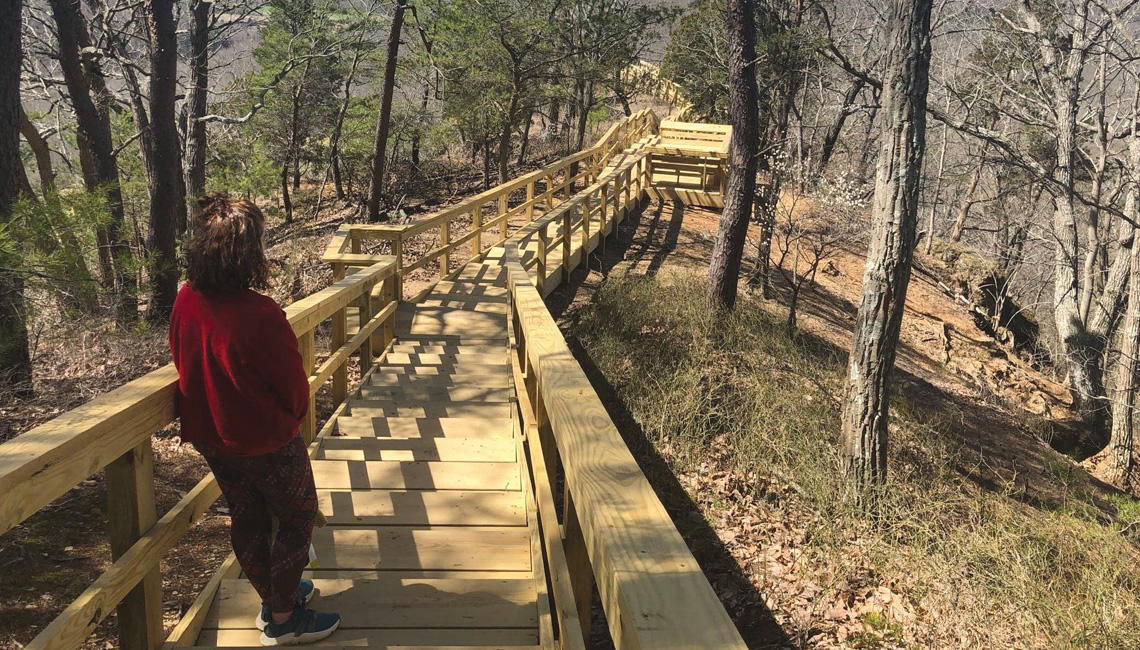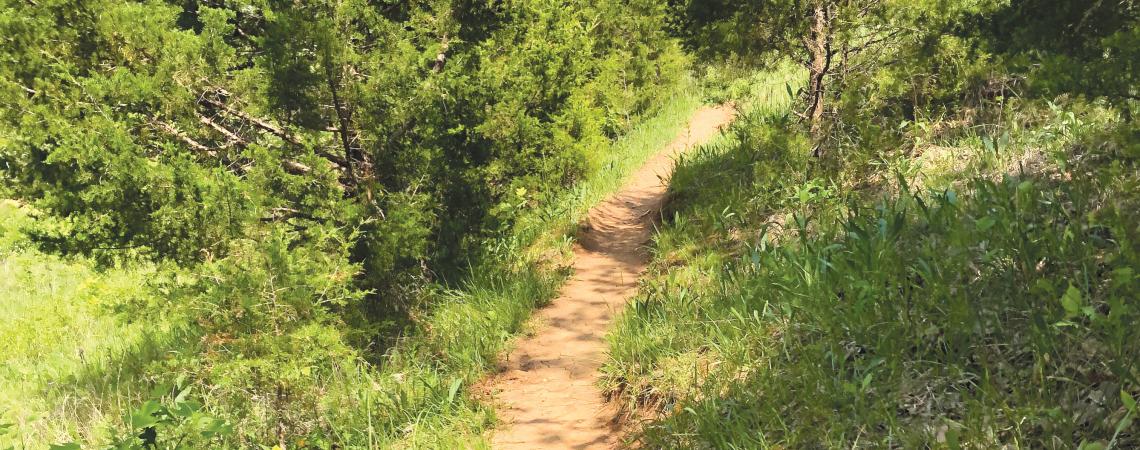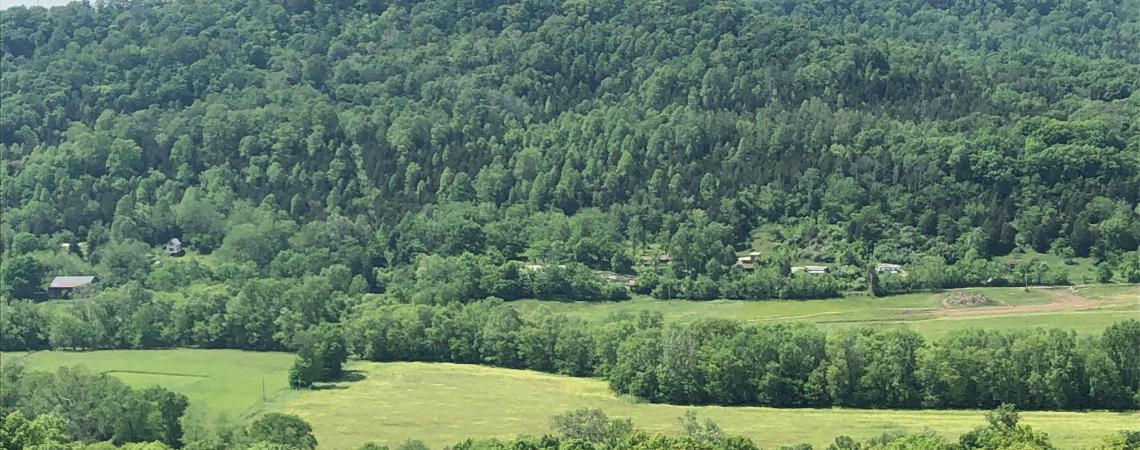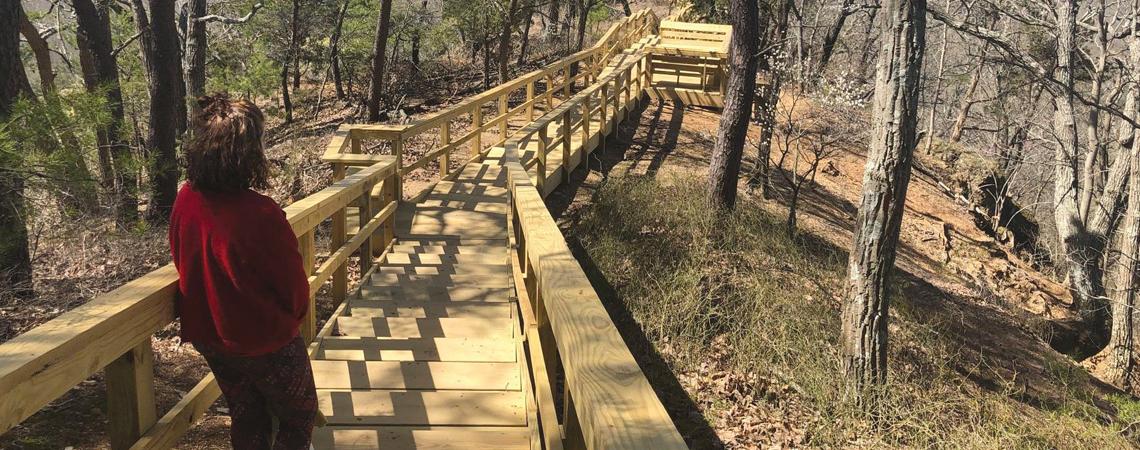High ground is challenging to find in Ohio. Alaskans, with their towering Denali, or even Arkansans, with their Ozarks, probably chuckle at the thought of our “high spots.”
Of course, the best-known Ohio pinnacle — the highest point — is Campbell Hill, which rises 1,550 feet above the surrounding plains. But with the manicured lawns of the Ohio Hi-Point Career Center technical school atop it, one doesn’t necessarily get much of a “wilderness” vibe there.
For a taste of rural and wild, head to Buzzardsroost — Ohio’s “other roof” — a rocky outcropping overlooking the untamed and chocolate-colored Brush Creek, which carves a treacherous valley through Adams County. The view atop Buzzardsroost is one of the best Ohio has to offer. And at close to 1,000 rocky feet high, it seems like one of the state’s highest points.
If you meander too far off the trail, you may find yourself on the edge of a drop of hundreds of feet.
Each time of year offers something different. Winter is a solitude of quiet and barren beauty. Spring is a time of reawakening and colorful songbirds. Summertime cloaks the hills in emerald beauty and wildflower bouquets. And autumn? Stake out a spot and watch the trees covering the valley alight in flaming oranges, crimson reds, and crisp rusts.
Adams County is a study in contrast to the rest of the state. The hardscrabble hills are honeycombed with creeks that pour down from the rocky ridges. Black bear meander into the county from the east in search of summer fruits and honey-filled hives. The hills of Adams County are the westernmost whisper of the Appalachians. The county’s rocky ridges shrouded in a summer haze have earned them the moniker of the “Little Smokies,” miniature cousins of their Tennessee counterparts. The place is also steeped in Civil War lore, and the ghosts of Morgan’s Raiders still haunt from their trail of terror through the Union hinterlands.
The Buzzardsroost trailhead is well marked off Route 125 near the town of Lynx — the name an homage to the bobcat, which still prowls these forests. There’s an overflow parking lot on the other side of 125 if the smaller trailhead lot is full — which happens at certain times of year.
An estimated 8,000 hikers have been coming to Buzzardsroost each year recently, according to Mike Hall, Appalachia forest manager at the Nature Conservancy, which manages the trail.
“The secret’s out,” says Carly Powell, a hiker in the Cincinnati Hikes Facebook forum of Buzzardsroost, advising people to arrive early in the day for a hike to avoid crowds.
The Buzzardsroost preserve honors Emma and Christian Goetz, siblings and scions of the well-known Cincinnati beer barons, who would come here to escape the city. A century later, people are still coming here to escape the city.
The trail underwent significant upgrades over the past couple of years, making the Buzzardsroost beauty easier to access. While the hike is still rigorous, wooden planks and boardwalks now make the terrain easier to traverse.
Look closely and you will notice lizards skittering up many of the trees. Eastern fence lizard numbers have been on the decline in Ohio in recent decades, but they’re common on the rocky top of Buzzardsroost, where they sun themselves.
About halfway up Buzzardsroost, the trail splits into a loop: one branch off to the right, the other to the left. The right side is slightly longer at 1.2 miles, the left is an even mile. I decided to take the long journey up and save some time down with the shorter route. I enjoyed the solitude, as this rural outpost had rendered my phone signal-less and I was relishing the quiet.
The recent improvements to the Buzzardsroost trail were born from necessity, says Chris Bedel, preserve director. The growing popularity of the trail was a continuing threat to the native vegetation that occurs there. There’s also the issue of the steep cliffs — if you meander off the path, enticed by the beauty of a view, you may find yourself on the edge of a drop of hundreds of feet.
All of the improvements have been made with one eye on the future, but one looking back in homage to E. Lucy Braun, the famed ecologist from the University of Cincinnati who studied the area back in the late 1920s and ’30s. “The photo on the sign is E. Lucy knee-deep in prairie vegetation instructing a group of college students, thus showing the lushness of what the prairie vegetation looked like prior to heavy visitation,” Bedel says, adding that Braun was instrumental in the protection of Buzzardroost through her research, advocacy, and even her efforts to form what would become The Nature Conservancy itself.
As I ascended Buzzardsroost, the sounds of cars on 125 faded, and a whispering wind from the south dredged up warm valley air. When I finally made it to the top, I was greeted with a serene panorama of Adams County’s rugged beauty. I wanted to linger and soak in the history and majesty of the area. I munched on granola and watched vultures ride the thermals as they rose from the valley. And I was high enough above Brush Creek to catch a phone signal. My solitude was broken by the ping of a text and suddenly my escape into the wilderness was interrupted. Next time, I’ll turn off my phone.
Notes from the trail
- Make sure not to confuse Buzzardsroost Rock with The Earl H. Barnhart “Buzzard’s Roost” Nature Preserve in Ross County. Buzzardsroost Rock is located on State Route 125 near the town of Lynx.
- Take a water bottle and a snack and plan for a 2 1/2-hour hike.
- Explore the nearby Wilderness Trail, which runs a 2.4-mile loop through the Edge of Appalachia Preserve.













